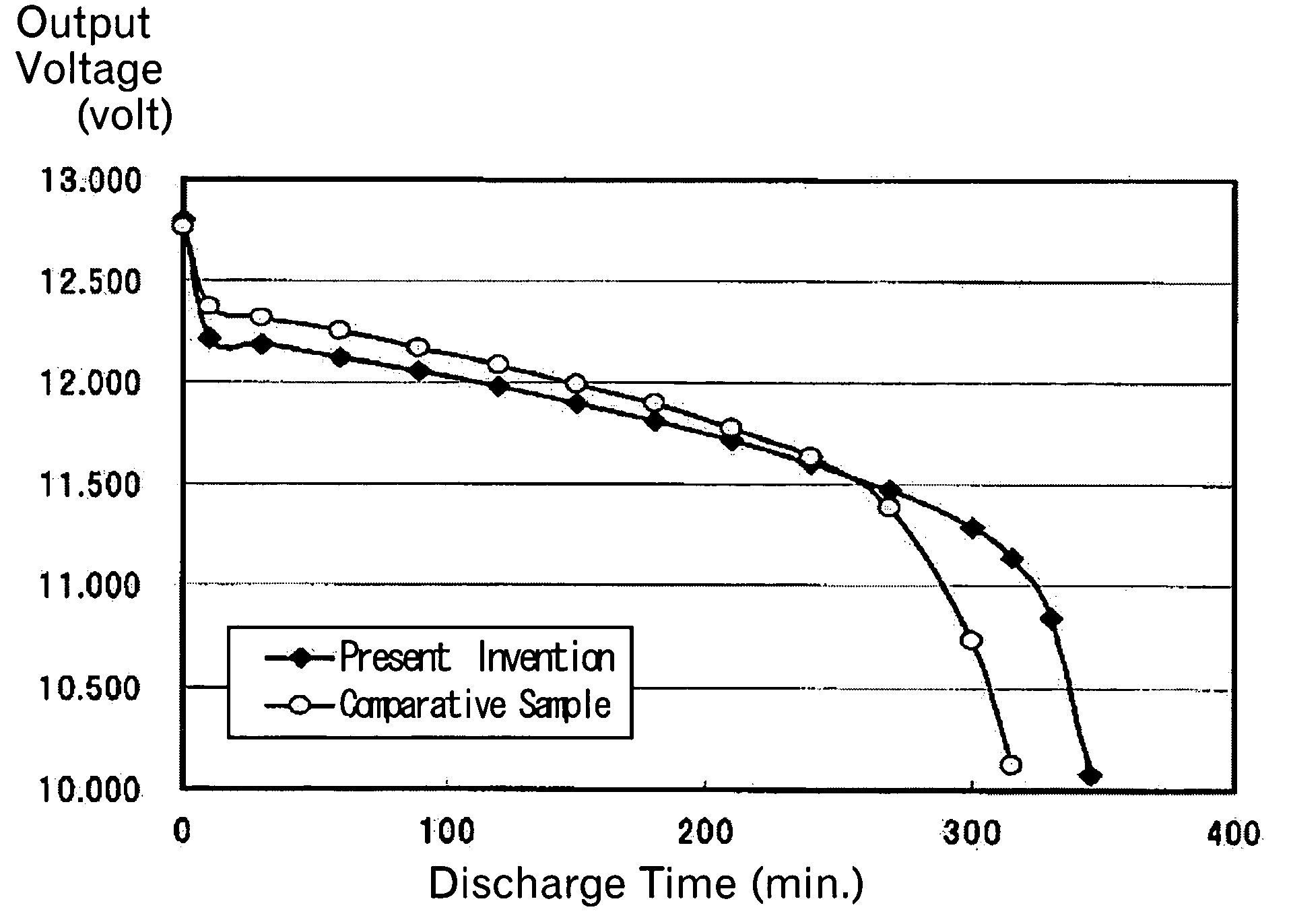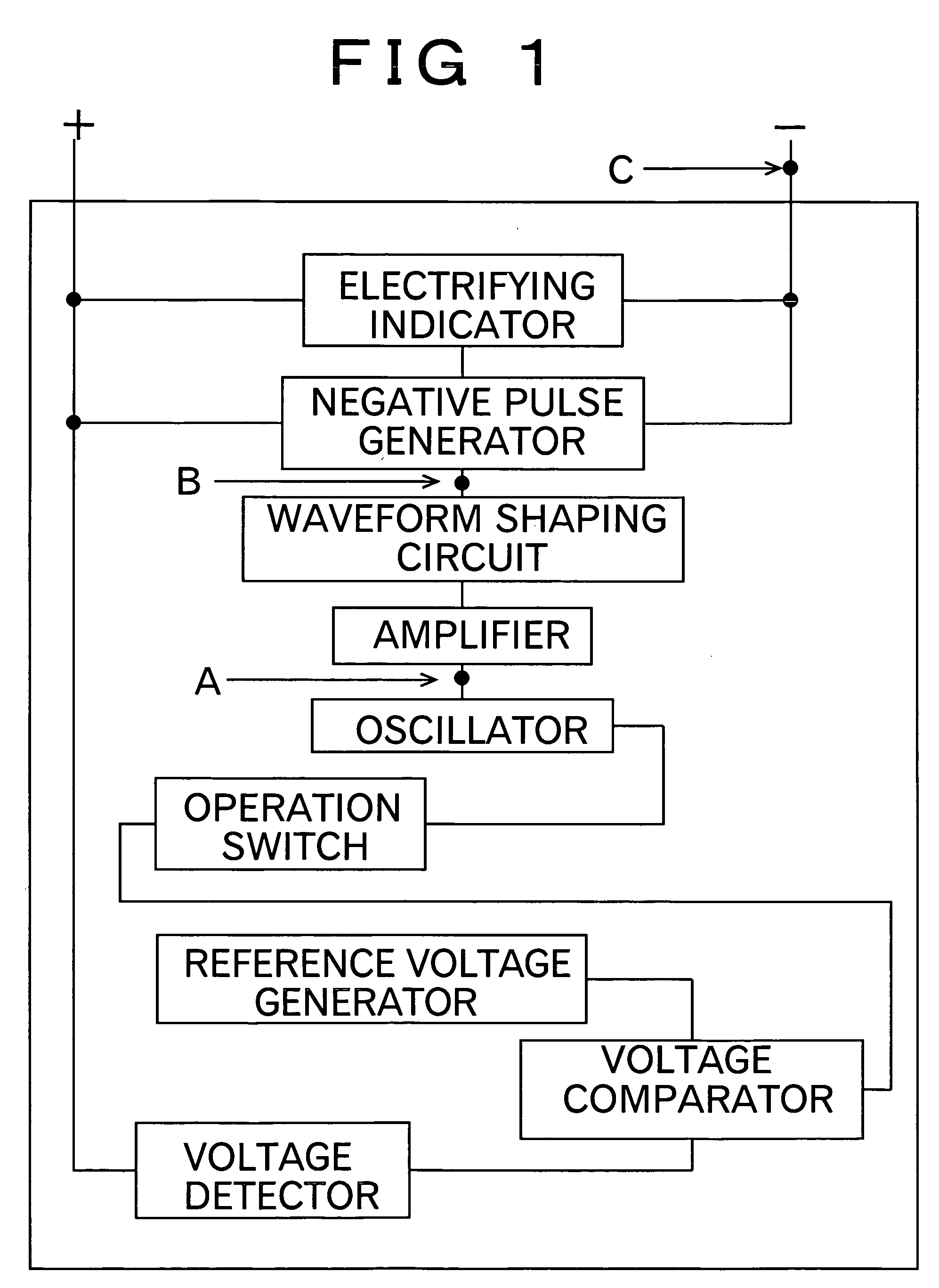Method for removing lead sulfate film formed in lead-acid battery
a technology of lead-acid batteries and lead sulfate, which is applied in the direction of manufacturing tools, secondary cell servicing/maintenance, transportation and packaging, etc., can solve the problems of deterioration of battery performance or inability to use, remained a significant problem, and it is nearly impossible for users to consistently render attention to the operative conditions of the battery
- Summary
- Abstract
- Description
- Claims
- Application Information
AI Technical Summary
Benefits of technology
Problems solved by technology
Method used
Image
Examples
Embodiment Construction
[0020] To resolve common issues suffered from the conventional methods as described above, the present invention provides a method for removing lead sulfate deposited in a film or membrane on electrodes of the lead-acid battery due to sulfation. The method of the invention is featured by using the pulse current having a short pulse width, which brings about a conductor skin effect of intensively dissolving the surface layer of the membranous lead sulfate deposited on the electrodes of the battery.
[0021] According to the invention noted above, the lead sulfate formed in a film or membrane on the electrode of the lead-acid battery is sequentially dissolved into lead ion and sulfate ion as the result of concentration of electrical charge into the surface layer (skin depth) of the lead sulfate, which is caused by applying a pulse current having a pulse width which is so short as to give rise to a conductor superficial effect (skin effect) on the electrode with the membranous lead sulfa...
PUM
| Property | Measurement | Unit |
|---|---|---|
| Time | aaaaa | aaaaa |
| Electrical resistance | aaaaa | aaaaa |
| Electrical resistance | aaaaa | aaaaa |
Abstract
Description
Claims
Application Information
 Login to View More
Login to View More - R&D
- Intellectual Property
- Life Sciences
- Materials
- Tech Scout
- Unparalleled Data Quality
- Higher Quality Content
- 60% Fewer Hallucinations
Browse by: Latest US Patents, China's latest patents, Technical Efficacy Thesaurus, Application Domain, Technology Topic, Popular Technical Reports.
© 2025 PatSnap. All rights reserved.Legal|Privacy policy|Modern Slavery Act Transparency Statement|Sitemap|About US| Contact US: help@patsnap.com



